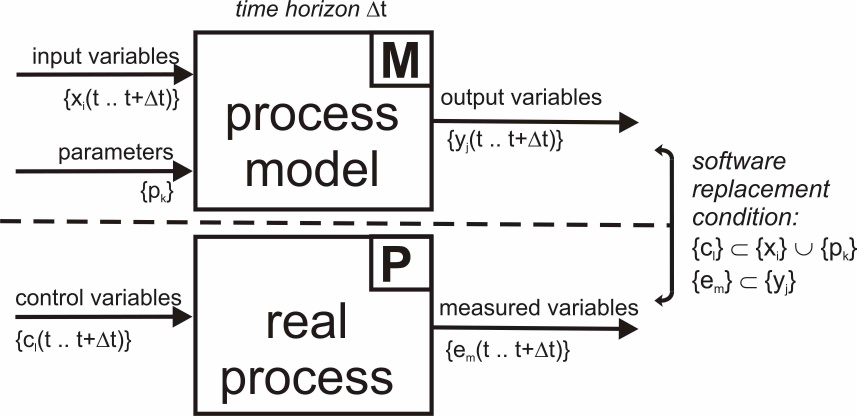The Process Reactor Model Collaboration Site
Homepage
>
FAQ
Sorry: This page from 2009 is outdated!
PRMC FAQ: Frequently answered questions:
What is a process modell?
A process model is defined as an implementation of an algorithm to predict the behaviour of an open or closed system as sketched below:
The information on the current system state is stored in the models internal memory and as long as the software replacement condition is fulfilled, the model can be used to simulate the reality. Such a process simulation is a subset of process modelling as it is an experiment performed on a model.
See also: Process (Wikipedia), Computer simulation (Wikipedia),
What is Model Predictive Control?
Model Predictive Control is an advanced method of process control that goes beyond usual PID controllers. Model predictive controllers rely on dynamic process modells. The models are used to predict the behavior of dependent variables (outputs) of a dynamical system with respect to changes in the process independent variables (inputs). In metallurgical processes, independent variables are most often setpoints of regulatory controllers, while dependent variables are most often constraints in the process (e.g., product purity, equipment safe operating limits). The model predictive controller uses the models and current plant measurements to calculate future moves in the independent variables that will result in operation that honors all independent and dependent variable constraints. The MPC then sends this set of independent variable moves to the corresponding regulatory controller setpoints to be implemented in the process.Having non-linear process modells as described on this site, non linear MPC set value prediction can be developed, see e.g. our EAF MPC demonstration.
See also: Model Predictive Control (Wikipedia).
© Dr. J. Wendelstorf
·
Imprint

